At James Monroe Elementary we work together to make sure students and staff follow the 3 R's: Be respectfull, Responsible and Resourceful. On this expedition I have seen just how important those qualities are.
I am here with a team from Northern Arizona University. The team leader is Dr. Darrell Kaufman, a geologist who teaches and does research in paleoclimatology. Dr Kaufman is also a respected author of numerous scientific articles.
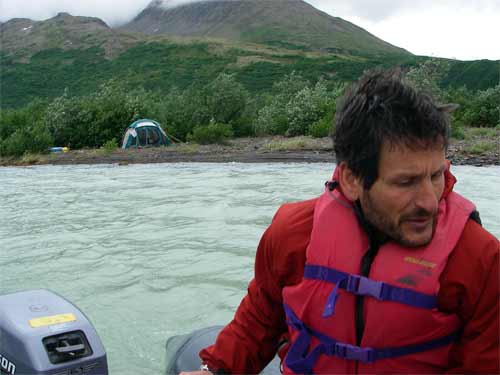
With him for the 5th year is Caleb Roop-Schiff who works with Dr Kaufman as a Senior Research Specialist at NAU. He runs the lab that will work on analyzing the cores that we get.
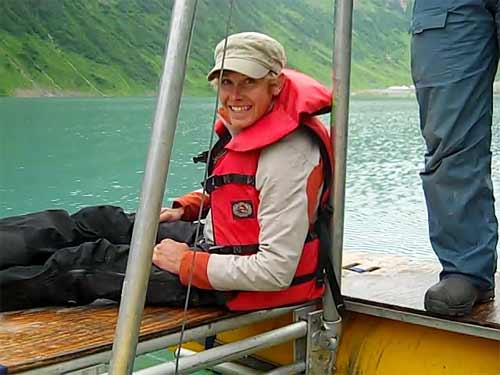
Here for the 4th season is Heidi Roop-Schiff who is working on research to finish her Master’s thesis. (You may remember reading about Heidi in a journal entry I filed in March.)
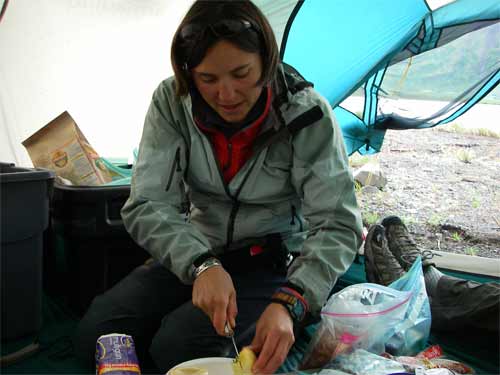
The new member of the team this year is Megan Arnold who is just starting work on her thesis project. From Vermont, she has had field work experience with other groups, but is just starting her graduate work at Northern Arizona University.
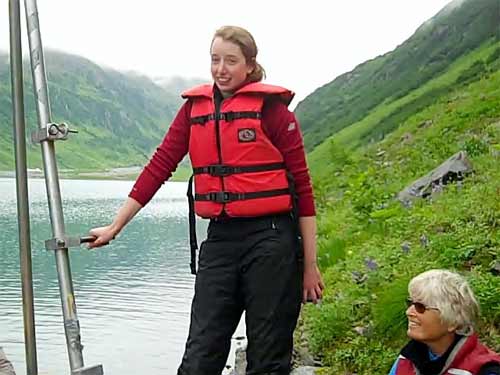
I was very fortunate to be the teacher chosen by PolarTREC to be a fifth member of this team this season. They were all friendly, patient and eager to help me learn.
All of the team members demonstrate the ability to adjust to whatever situations demand. They move smoothly through chores and challenges with comfortable courtesy, good humor, and eagerness to get the job done. They respect each other as qualified, talented, hard-working individuals and rely on each other for support and understanding.
Each person accepts their fair share of the responsibility for the group: whether they like a job or not, they recognize that it has to be done and take their turn to do it. But the most important strength that I see in all the members is resourcefulness! That plays out as creative problem solving in any number of situations. We are miles and hours from outside help for anything but a dire emergency. When things go sideways, and many times they might, we have to do what is necessary to make things come out right.
Sometimes equipment breaks while out in the field and the team either finds a way to fix it, or finds something else to use. The research season is short and every day is planned pretty tightly. Dr Kaufman explained to me that he tries to insert an extra day at sites where there are more unknowns to deal with, but there are limits on how much time you can take to make repairs. The team leader needs to know when to change directions to make the most of their time.
One limiting factor is the cost of flying all our gear in to these remote sites. Air time is purchased by the flying hour. Each load in a float plane has a weight limit. The more trips: the higher the cost. This means no extra people and no extra supplies beyond the absolute necessary for safety and "comfort." Tools are basic. Spare parts are few. Duct tape and zip ties are our best friends. Dehydrated food is gourmet with the judicious use of the indispensable spice kit. (Water is plentiful.) We even figured out how to make pizzas in a frying pan one night. Picky eaters learn to deal with it or lose weight!
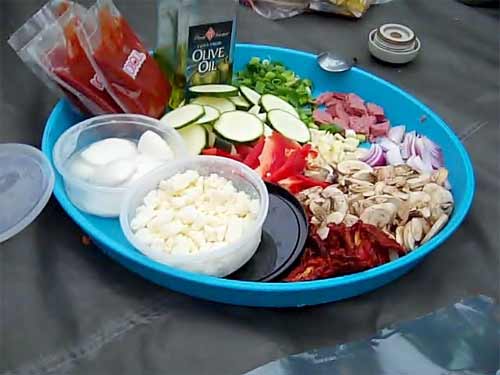
COLTON asked: "What are the summer temperatures like? Will you need special clothes? Well Colton, the temperatures always stayed a degree or two on one side or the other of 10 C. The warmest day was 13 and the coolest night was 8. The humidity was very high from all of the rain. Many days we were right in a cloud all day. The sun did shine sometimes for brief periods, but the geographic location of the lakes chosen for this research set us up for rain! And it did rain every single day that we were in the field.
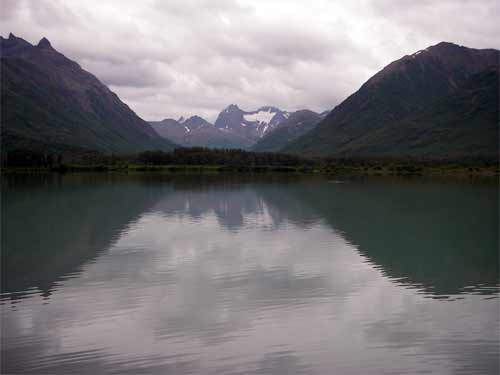
As for special clothes, I lived in my UnderArmor shirt and a pair of black polypropylene tights that fit nicely under my rain suit. I was happy I took many pairs of thick wool sox because we spent lots of time in the water. Thick sox and my insulated Muck Boots kept my feet cozy. Because there was often wind with the rain I also usually wore a fleece hat under the hood of my rain jacket. The theory is: stay dry and warm because there is not much way to dry wet clothes in the field! I am happy to say I was never uncomfortably cold and wet. We were always careful to get tents set up right away when we landed at a lake. We always put the rain flies on the tents and staked them down well so that wind and rain did not get on our personal gear. We had all chosen clothing made from fibers that dry quickly....no cotton! It was nice to get back to a bunkhouse or condo for a night and cuddle up in a soft old T-shirt and jeans for a few hours!
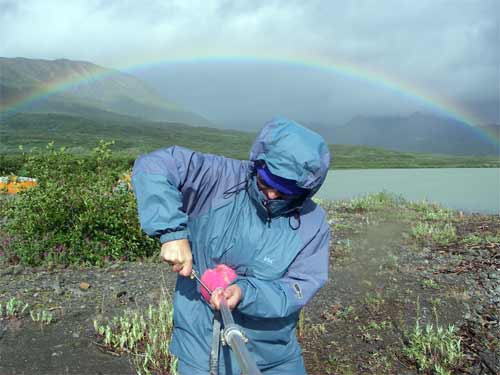


Comments